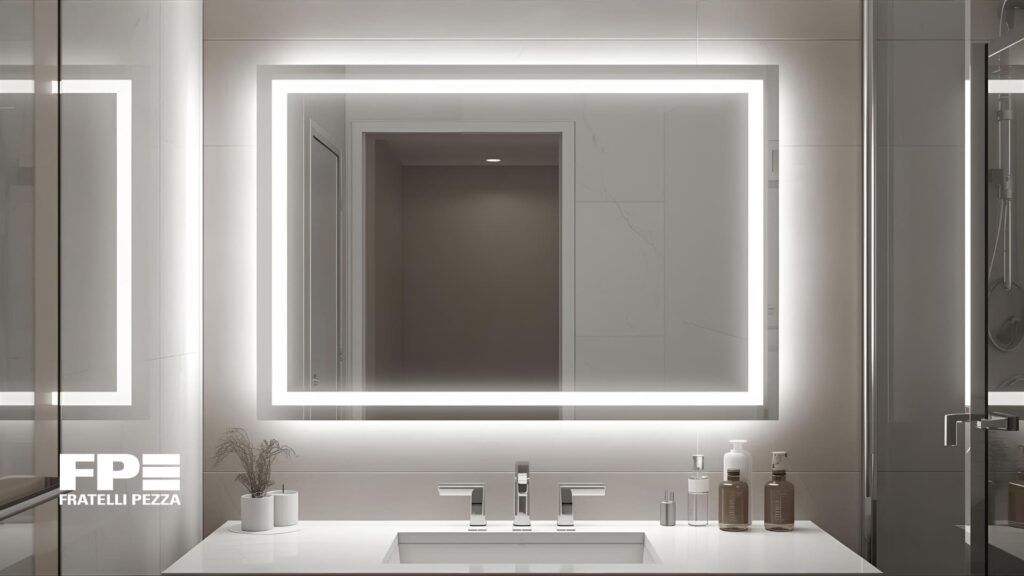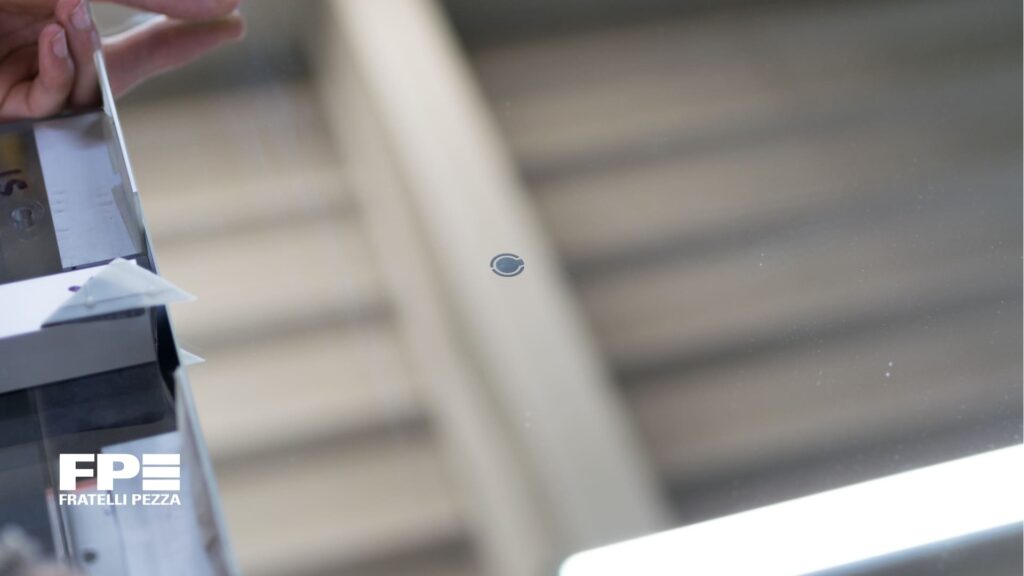
Sandblasting vs Laser Blasting: Which Technology Should You Choose for Glass?

Every new technology begins with a promise. In the world of decorative glass, laser blasting arrived with all the appeal typical of digital solutions: a non-contact, precise, and “clean” process projected toward the future. For many, it seemed like the decisive step into a new era of glass decoration. Yet, glass remains a complex material, with its own physical and optical balance—one that must be properly understood and managed.
Trade fairs and technological demonstrations always offer a fresh look at the industry’s future potential. However, daily production tells a different story: in real-world operations, other factors come into play—process stability, operating costs, machine maintenance, and the adaptability of each technique to different glass types and desired results.
It is based on these parameters that the true effectiveness of a technology can be assessed, enabling companies to make well-informed choices.
If you work in the glass processing industry and want to understand which is the best technique for decorating glass surfaces—or what the real differences are between sandblasting and laser decoration—keep reading to find out everything you need to know!
Sandblasting and Laser Decoration: Differences, Costs,and Operation
Sandblasting is a mechanical process: a flow of abrasive particles mixed with compressed air reshapes the glass surface, creating texture, opacity, and controlled depth.
It is a cold process, free from thermal stress or optical distortion, and therefore safe for any type of glass — including mirrors, tempered glass, laminated glass, coated, or decorated panels. Once the parameters are set, the process is highly repeatable: the quality remains consistent, setup times are minimal, and no continuous recalibration is required. Maintenance is simple and consumption is limited, thanks to modern abrasive recovery and integrated filtration systems.
Laser blasting, or laser decoration, on the other hand, removes surface layers or coatings through ablation, creating extremely detailed and localized effects. However, this level of precision requires complex management. Every parameter — power, frequency, pulse duration, focus, scanning speed — influences the final result. Each new substrate demands specific testing and calibration, which increases production times and real operating costs. Moreover, mirrors and coated glass may react unevenly to the heat generated by the laser, with potential risks of halos, microcracks, or delamination if parameters are not perfectly optimized.
Aesthetic and Performance Results: A Comparison

From an aesthetic standpoint, sandblasting retains a long-standing advantage in glass processing. It creates a true satin surface, with a tactile and customizable finish that can range from light shading to deep and uniform effects — even across large surfaces.
Laser decoration, by contrast, primarily alters the reflectivity of the glass rather than its texture: it produces optical contrast but not depth. It excels in micro-engraving and serial decoration but is less suitable for uniform finishes, smooth gradients, or large-scale applications requiring visual continuity.
In terms of compatibility, sandblasting can be applied to any type of glass, including treated or coated panels, without the risk of deformation or color alteration.
Laser processing, on the other hand, must be recalibrated each time according to the glass thickness, coatings, and color of the substrate.
Which Should You Choose: Sandblasting or Laser Decoration?
In today’s production environment, automatic sandblasting remains the most reliable and efficient solution.
Laser decoration, while offering a high level of precision, involves higher initial investment, longer cycle times, and more complex maintenance — particularly concerning laser sources and optical systems. Both technologies can deliver excellent results, but in different contexts.
Laser technology stands out in micro-decoration, traceability, and serial customization, while sandblasting excels in large-format applications and consistent industrial repeatability.
The latest automatic sandblasting systems — such as the Mistral EV+ series by Fratelli Pezza — combine digital control, multi-nozzle configurations, and predictive maintenance, merging automated speed with ease of use.
This combination allows manufacturers to achieve artisanal quality, process control, and production continuity, while easily managing high volumes.
Ultimately, sandblasting remains the most versatile and reliable choice for those seeking control, uniformity, and lasting aesthetic value.
From architectural glass to LED mirrors and technical surfaces, sandblasting continues to evolve — proving its adaptability across a wide range of applications.
For those attending Eurasia Glass
International trade fairs such as Eurasia Glass 2025 provide a vital meeting point between those exploring new technologies and those testing their reliability in real production.
It is precisely within this dialogue between experimentation and practicality that the glass industry continues to move forward.
Even without exhibiting at the event, Fratelli Pezza remains committed to developing increasingly high-performing solutions in automatic sandblasting — which continues to be the benchmark technique for glass processing — while keeping quality, flexibility, and production continuity at the core of its work.
This is the philosophy that has inspired us for over forty years: to innovate while maintaining consistent results and safety at every stage of the production process.
Would you like to learn more about the technical and economic advantages of sandblasting for glass and mirrors?
Contact us at info@fratellipezza.com and book a meeting with our consultants — we’ll be happy to share our expertise and provide all the support you need!